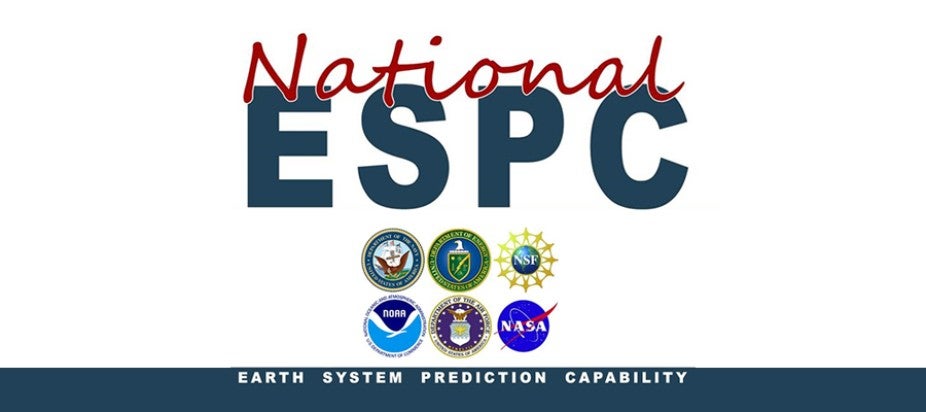Metrics, Post-processing, and Products for Subseasonal to Seasonal Workshop

5:00 – 5:00 pm MST
Goal
The interagency National Earth System Prediction Capability is convening a workshop in support of the recent 2017 Weather Research and Forecast Improvement Act (P.L. 115-25), which directs and authorizes NOAA to improve temperature and rainfall prediction as well as impacts, such as drought, sea-ice extent etc at two weeks to two years, defined in the Act as sub-seasonal to seasonal (S2S). The act also directs NOAA define operational goals and objectives for these improvements and to reach out to other Agencies, academia and the private sector to help in defining the forecast, observing, monitoring, and research needs to meet these goals and objectives This workshop is an initial meeting of a broad claimancy discussion of user needs, agency capabilities and products, gaps between needs and capabilities, and potential operational and technological solutions to address those gaps, especially potential post-processing solutions, developer metrics and reliability metrics. Metrics can be categorized in the following groups:
-
Input: observations, their quality, quantity, distribution etc.
-
Process: measuring characterization of physical processes. Can range from detailed (moisture, interface fluxes) to collective (el Nino, TC genesis)
-
Output: specific forecast variables, to include thresholds such as drought, flood, frost, monsoon, TC genesis)
-
Outcome: improved forecasts, increased reliability
-
Impact: user/customer benefit from decisions based on forecasts (safety, economy, preparedness).
This workshop will focus on (2) through (4).
Objectives
-
Identification of current agency operational capabilities for S2S prediction and how the agencies evaluate them (current metrics they are using)
-
Identification of user data (parameters, frequency, availability, reliability) and product needs
-
Gaps between current capabilities and needs
-
Potential operational solutions to gaps (i.e., more frequent NWP runs, more ensemble members, more output parameters, better product design, etc.)
-
Potential technological solutions to gaps (i.e., post processing, analog, statistical/dynamical methods, AI, etc.)
-
Discussion of usability, reliability and improved metrics (developer metrics and reliability metrics)
-
Identification of required additional research
Final Report
View the Workshop Final Report
Acknowledgement:
The workshop was sponsored by the interagency Earth System Prediction Capability. Report preparation and meeting logistics were provided by UCAR via NOAA OAR award number NA16OAR4310253, Climate Adaptation and Mitigation Program (CAMP).
Venue
NOAA Center for Weather and Climate Prediction (NCWCP) Conference Center Auditorium
Remote Participation
Remote participation will be available via "GoToWebinar"
Workshop Contacts
For logistics questions, please contact Heidi Allen: 303-497-8685 or allenh@ucar.edu
For other questions related to this meeting, please contact Jessie Carman: 301-734-1022 or jessie.carman@noaa.gov